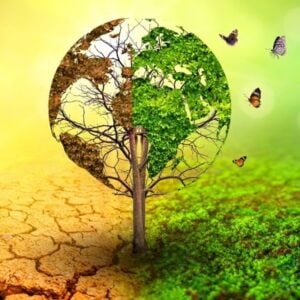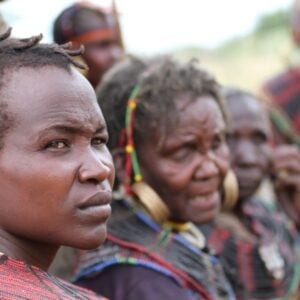Countries in Eastern Europe and Central Asia are feeling the impacts of climate change more intensely than ever. Droughts, floods, and erratic rainfall are increasingly affecting food production, hydropower, and critical infrastructure. These disruptions threaten the most vulnerable populations, particularly poorer households, while the cost of climate-related damages is projected to rise sharply by 2050.
Despite these challenges, the region is leveraging opportunities to turn climate ambition into tangible benefits. By focusing on methane reduction, ecosystem-based adaptation, and aligning climate action with economic reforms, countries are demonstrating how ambitious climate policies can create greener jobs, resilient communities, and improved livelihoods. Nationally Determined Contributions (NDCs) are being revised to reflect these strategies and maximize sustainable development benefits.
Ukraine: Resilient Climate Action Amid Conflict
In Ukraine, war has severely disrupted power and renewable energy infrastructure, with two-thirds of the country’s electricity generation and over 40% of solar and wind capacity in occupied territories. Yet, the country remains committed to climate action. In 2024, Ukraine adopted the Climate Law to guide low-carbon development and achieve climate neutrality by 2050. Its revised NDC sets ambitious goals to cut greenhouse gas emissions by 68–73% and phase out coal by 2035. Ukraine’s determination highlights that climate progress is possible even under extraordinary adversity.
Uzbekistan: Solar Energy and Low-Carbon Housing
Uzbekistan, the region’s most populous country, is advancing renewable energy and sustainable living. The rollout of solar power improves electricity access while creating jobs. Through the “Ishga marhamat” training centers, electricians and plumbers gain practical skills to install and maintain solar panels and water heaters. In addition, affordable, low-carbon housing initiatives are transforming rural communities, with over 6,770 residents now living in energy-efficient homes. Seven new building codes and green financing mechanisms further reinforce Uzbekistan’s sustainable development trajectory.
Georgia: Protecting Forests and Reducing Fire Risks
Georgia, with forests covering 44.5% of its land, is addressing climate-induced forest degradation and rising wildfire risks. Forest fires increased from 12 incidents in 2012 to 48 in 2022, affecting vast areas. With UNDP support, local authorities have strengthened early warning systems, provided fire-fighting equipment, and trained rangers in wildfire prevention and management. Facilities like the Business Service Yard in Mtskheta help reduce risks to people and property while building local capacity for climate resilience.
Serbia: A Just and Inclusive Green Transition
Serbia’s revised NDC emphasizes a just transition for vulnerable groups, including former coal workers and people with disabilities. The Senjski Rudnik eco-museum exemplifies this approach by repurposing an old coal mine to create jobs for women and provide re-skilling opportunities. Public-private initiatives also enable energy efficiency upgrades for vulnerable households, helping reduce energy costs and improve resilience.
Moldova: Small Grants, Big Climate Impact
Moldova is advancing climate neutrality with ambitious NDC targets, including a 75% reduction in GHG emissions by 2035. Through small grants, local entrepreneurs adopt sustainable energy solutions and climate-resilient practices. For example, Aurelia Balan switched her greenhouses from coal to solar, cutting energy costs by 30%, while Maria Caraman installed an energy-efficient incubator to reduce electricity costs and increase poultry productivity.
These initiatives, part of UNDP’s Climate Promise and Pledge to Impact Programme, show how strategic investments in climate action can deliver lasting benefits. By linking NDCs with local innovation, sustainable livelihoods, and inclusive development, Eastern Europe and Central Asia are turning climate challenges into opportunities for a greener, more resilient future.






